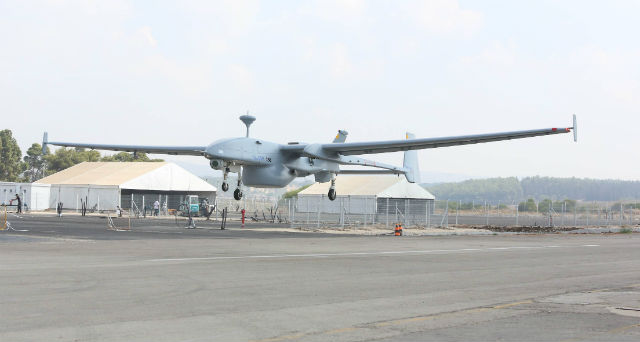A European project intended to prove the feasibility of using satellite communications to enable unmanned air system operations in non-segregated airspace completed a 6h flight from San Javier air base in Spain on 24 April.
Performed using a maritime surveillance variant of the Israel Aerospace Industries Heron (file image below), the demonstration involved the beyond line of sight control of the air vehicle, with satellite communications maintained between an operator in its ground control station and air traffic controllers.
 |
|---|
Israel Aerospace Industries |
Funded by the European Defence Agency (EDA) and European Space Agency, the Desire programme test was conducted by an international consortium led by Spain's Indra, and also included AT-One, CIRA, SES ASTRA and Thales Alenia Space.
The Heron's satellite data link was engaged after take-off, while the aircraft was still in segregated airspace, before it entered class-C airspace at 20,000ft (6,100m) under the supervision of Spanish air navigation service provider Aena.
During the trial, a manned aircraft from the Spanish air force academy approached the UAS, simulating frontal and 90˚ collision trajectories. "The pilots of the two aircraft followed the separation instructions issued by the air traffic controllers, demonstrating the safe operation of remotely-piloted aircraft, even in an emergency situation," the EDA, ESA and Indra say in a joint statement.
Land and maritime surveillance information was also relayed to the ground control station during the mission.
"All the information collected in these tests will be analysed and compared with the safety requirements being established by the European Aviation Safety Agency and the operational requirements being set by Eurocontrol," the programme partners say.
Source: Flight International























